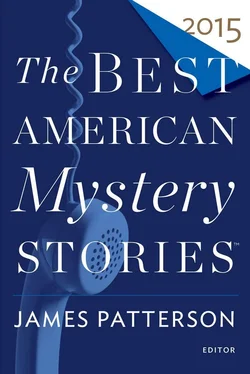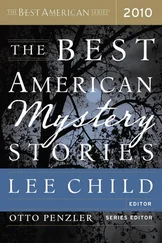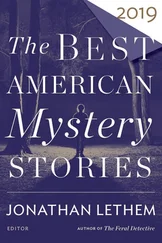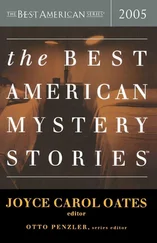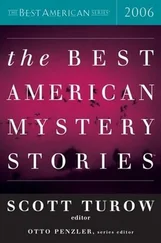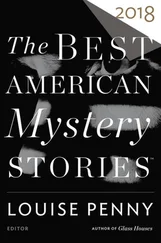His most recent novels are The October List , a thriller told in reverse; The Skin Collector and The Kill Room , Lincoln Rhyme novels, and XO , a Kathryn Dance thriller, for which he wrote an album of country-western songs, available on iTunes and as a CD; and Carte Blanche , the latest James Bond continuation novel, a number-one international bestseller.
His book A Maiden’s Grave was made into an HBO movie starring James Garner and Marlee Matlin, and his novel The Bone Collector was a feature release from Universal Pictures, starring Denzel Washington and Angelina Jolie. And yes, the rumors are true: he did appear as a corrupt reporter on his favorite soap opera, As the World Turns. He was born outside Chicago and has a bachelor of journalism degree from the University of Missouri and a law degree from Fordham University. Readers can visit his website at www.jefferydeaver.com.
• I was, to put it mildly, bookish as a child. I read constantly. (It didn’t hurt that I had absolutely no talent for sports whatsoever; fiction was a safer — and less shameful — way to while away the hours.) Two authors stand out in the well-populated pantheon of my young reader’s experience: J.R.R. Tolkien and Arthur Conan Doyle.
I can’t tell you how many times I read The Hobbit and The Lord of the Rings (I can still recite a poem in Elvish, but please don’t tell anyone). Nor could I tally up the hours I spent, yes, in the company of Sherlock. I appreciated then, and still do, an intellectual protagonist: someone who had to outthink the villain and, ideally, prevail in a wholly unexpected way. (Aren’t we all tired of heroes who win simply because they shoot straighter or karate-kick higher?) Add a dash of exotic location, a different era, quirky characters, police procedure, and I’m on that tale in a London minute. Doyle delivered exactly what my story-hungry heart longed for.
When asked what were the inspirations for my own series protagonist Lincoln Rhyme, I answer not Ironside or Jimmy Stewart in Rear Window (Rhyme is a quadriplegic) but Sherlock Holmes. Rhyme is a forensic scientist and criminalist who uses his brain to track down the perps, since he obviously can’t outshoot anyone. He’s also a curmudgeon, reclusive, and substance-dependent (Scotch). Oh, I gave him a Watson too, though Amelia Sachs is a touch different from John: she’s a former fashion model turned NYPD detective who drives a muscle car and shoots like nobody’s business.
When I was asked to be in In the Company of Sherlock Holmes , I did a lot of thinking about the direction to take, rereading many of the original stories, since I knew mine would be among those of so many fine writers — and some with a far better grounding in the Holmes catalog than I possessed. At some point during this research I decided that Doyle seemed to share a trait with me: I delight in creating my villains, and no one created better bad guys than Sir Arthur.
Ping. There was the answer. I would imagine an antagonist in my story worthy of the rarely seen but undeniably evil and enigmatic Moriarty.
The result was “The Adventure of the Laughing Fisherman,” a fairly typical story of mine, in which nothing is quite what it seems to be at first blush.
Brendan DuBoisis the award-winning author of seventeen novels and more than 135 short stories. His latest novel, Blood Foam , was published in May.
His short fiction has appeared in Playboy, Ellery Queen’s Mystery Magazine, Alfred Hitchcock’s Mystery Magazine , and numerous anthologies, including The Best American Mystery Stories of the Century , published in 2000, and The Best American Noir of the Century , published in 2010. This is his sixth appearance in the annual Best American Mystery Stories anthology. His stories have twice won him the Shamus Award from the Private Eye Writers of America and have earned him three Edgar Allan Poe Award nominations from the MWA. He is also a Jeopardy! game show champion.
Visit his website at www.BrendanDuBois.com.
• When I saw that the Mystery Writers of America was soliciting short stories for an anthology based on the Cold War ( Ice Cold: Tales of Intrigue from the Cold War ), I knew I was going to submit a story. All right, at the time I didn’t have a story, but I knew one would quickly come to me, and I was right.
I was a child of the Cold War, and growing up in Dover, New Hampshire, I was just a few miles away from two key military bases, Pease Air Force Base, the home of a nuclear-armed Strategic Air Force installation, and the Portsmouth Naval Shipyard, where nuclear-powered submarines were constructed and overhauled.
This was a time when FALLOUT SHELTER signs were located at my Catholic elementary school, where “duck and cover” drills had been conducted, and when the roaring sounds of B-52 bombers taking off at night during an exercise would shake the house.
With that background, a story idea immediately came to me, concerning the sinking of the submarine USS Thresher on April 10, 1963, with the loss of all hands. This disaster still reverberates among the residents of my home state, and my family has a connection: reactor control officer Lieutenant Raymond McCoole was a neighbor of ours, and survived because he had to take an ill wife to the hospital.
But suppose the Thresher wasn’t lost because of an accident? Suppose it was sabotage? And that’s where “Crush Depth” came from. It was an intriguing yet melancholy story to write, and I’m honored to have it appear in this anthology.
John M. Floyd’s short stories and features have appeared in more than two hundred different publications, including The Strand Magazine, Alfred Hitchcock’s Mystery Magazine, Ellery Queen’s Mystery Magazine, Woman’s World , and The Saturday Evening Post. A former air force captain and IBM systems engineer, Floyd won a Derringer Award in 2007 and was nominated for an Edgar in 2015. He is also the author of five collections of short fiction: Rainbow’s End (2006), Midnight (2008), Clockwork (2010), Deception (2013), and Fifty Mysteries (2014). He and his wife, Carolyn, live in Mississippi.
• The idea for my story “Molly’s Plan” began years ago, when I was employed with IBM. During most of my career there, I worked with bankers and banking software and spent a lot of time in the lobbies, back rooms, and computer centers of financial institutions. One of these was a big, ugly branch of a regional bank located at the very end of a narrow street that was always jammed with traffic. Its limited access triggered an idea in my devious mind, which was already seriously devious, even back then. My thought was, This bank would be really hard to rob — or at least really hard to escape from after the robbery. It would be so difficult, in fact, that no sane criminal would attempt it. As I later mentioned in the resulting story, “Smart rustlers tend to avoid box canyons.” Needless to say, the characters in my story — who consider themselves both smart and sane — do attempt it. The story itself was great fun to put together, and the setting is so similar to the one I remembered (my memory bank?) that I felt I was actually there during the writing process. Which makes me wonder, sometimes, about my own sanity...
Scott Grandis the pseudonym for Zach Basnett, who lives on the California coast with his wife and cat. “A Bottle of Scotch and a Sharp Buck Knife” is his first published work and appeared in Thuglit , issue 11. His other short stories, “No Rest for the Wicked” and “Sight,” can be found in Dark Corners Pulp Magazine , Vol. 1, issues 1 and 2. His science fiction novella, Proximity , will be published this year. His other works include the self-published novellas SPORT, 3 Day Life , and Only Child.
Читать дальше
